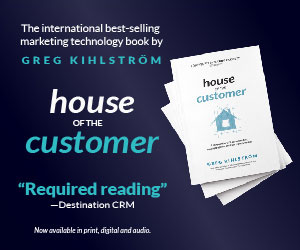This article was based on the interview with Gruia Pitigoni-Aron from The Trade Desk by Greg Kihlström, MarTech keynote speaker for The Agile Brand with Greg Kihlström podcast. Listen to the original episode here:
Data-driven success in advertising is a key aspect of modern marketing strategies. By utilizing data and analytics, advertisers are able to target their audiences more effectively and deliver relevant ads that resonate with consumers. This ultimately leads to higher engagement, increased sales, and a better return on ad spend (ROAS).
One real-life example of data-driven success in advertising is the case of Wells Food Service, the world’s largest family-owned ice cream and frozen treat maker. They wanted to use their digital marketing dollars to drive sales for their ice cream brand, Halo Top. To achieve this, they needed to understand how their media investment was contributing to sales and their ROAS.
Wells Food Service partnered with their agency, Gale, to activate an omni-channel campaign for Halo Top across various channels such as display, mobile, online video, audio, digital home, and connected TV. They also utilized TradeDesk’s retail data solutions for audience targeting and sales measurement from Kroger, a major grocery retailer.
The result was astounding. The campaign delivered results that exceeded expectations, generating a 470% ROAS for their omni-channel campaign that targeted Kroger audiences on the TradeDesk platform. This significant increase in ROAS allowed Wells Food Service to reinvest the money into more advertising and ultimately drive more sales.
This case study highlights the importance of an omni-channel strategy and leveraging retail data for audience targeting. By utilizing data-driven insights and targeting specific audiences, advertisers can maximize their campaign performance and achieve impressive results.
Investing in first-party data is crucial for advertisers to overcome the challenges of data-driven advertising. First-party data refers to the data collected directly from customers or users of a brand’s website or app. It provides valuable insights into customer behavior, preferences, and purchase history.
By leveraging first-party data, advertisers can create personalized ads that resonate with their target audiences. This level of personalization leads to higher engagement and conversion rates as consumers are more likely to respond positively to ads that align with their interests and needs.
Furthermore, first-party data allows advertisers to make data-driven decisions for better campaign performance. By analyzing the data, advertisers can identify trends, optimize their targeting strategies, and allocate their ad spend more effectively. This results in improved ROI and a more efficient use of advertising budgets.
Investing in first-party data is crucial for advertisers to overcome the challenges of data-driven advertising. It allows brands to have a deeper understanding of their customers, deliver personalized ads, and make data-driven decisions for better campaign performance. With the right strategies and solutions, advertisers can harness the power of first-party data to create effective and impactful advertising campaigns.











